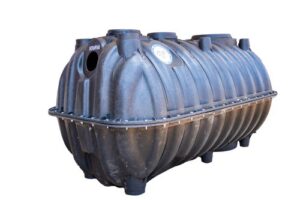According to World Health Organization, 2.2 billion people are affected by waterborne diseases every year. The control of human waste is a vital public health measure. Fecal matter (solid or semi-solid human waste that is discharged from the large intestine) contains the bacteria which causes diarrhoea which is a serious health risk, especially to children and the elderly. The fecal matter gets into drinking water when it contaminates surface water or groundwater sources, or when sewage leaks into these sources.
It is important to dispose of human waste properly so that it does not affect our health and the environment. However, more than half of the world’s population which is 4.2 billion people, have no access to proper sanitation. According to research, an average of six litres of toilet waste water is produced daily in developing countries. Majority of the people in these developing countries lack access to safe sanitation which equates to 14 billion litres of untreated faecallycontaminated waste water daily.
Traditional septic tanks as well as pit latrines pause a danger to the environment. This is because it is hard to know how far it has travelled to the ground into water ways. The untreated water is usually polluted with bacteria, viruses, parasites, and toxic chemicals that can cause diseases in humans. In other areas contaminated wastewater is usually discharged into rivers, lakes, and oceans without treatment endangering aquatic life.
Human Waste Disposal and Treatment Methods
There are many ways of disposing fecal waste to avoid open defecation. In this article however we are going to look at safe ways of human waste disposal. We cannot emphasize enough the importance of treating waste water. Biodigester septic tanks are small scale installations and one-way fecal waste can be disposed for treatment. This ensures the waste water does not pollute the environment once it is discharged. The other method is sewage treatment plants, these are for large scale treatment of waste water. Households, commercial and industrial buildings are connected to a sewage treatment plant which ensures that waste water is treated before it is released into the environment.
Both fecal coliform bacteria and viruses can be transmitted through waterborne disease. This is why it is important to keep fecal matter from getting into the water supply. There are many ways that this can be accomplished, such as septic tanks or sewage treatment plants pollute the environment. Human waste that is not disposed of properly contaminates drinking water which has a huge impact on the water quality
The traditional sewage systems are not designed to be sustainable. They are expensive to maintain and they pollute the environment.



